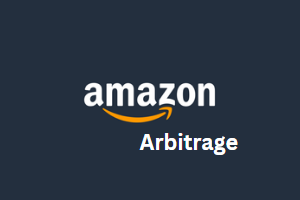Amazon Arbitrage
The allure of turning everyday shopping into a profitable business model is undeniable. Amazon arbitrage, a form of retail arbitrage, offers just that opportunity. By leveraging price discrepancies across different marketplaces, you can source products at a lower cost and resell them on Amazon for a profit. But is it a walk in the park paved with gold? This comprehensive guide delves into the world of Amazon arbitrage, exploring its intricacies, strategies, potential challenges, and valuable tips to help you decide if it’s the right fit for your entrepreneurial journey.
Understanding the Fundamentals
At its core, Amazon arbitrage hinges on the concept of buying low and selling high. You act as a middleman, identifying products available at a discounted price elsewhere and then reselling them on Amazon, a platform boasting a vast customer base and established fulfillment infrastructure. The key lies in finding these price discrepancies and ensuring a profit margin after factoring in all associated costs.
There are two primary methods for sourcing products for Amazon arbitrage:
- Retail Arbitrage: This involves scouting brick-and-mortar stores for clearance sales, discount bins, and coupon opportunities. Patience, keen observation skills, and the ability to identify profitable deals are crucial for success in this method.
- Online Arbitrage: Here, you source products from online retailers like Walmart, eBay, or other marketplaces. Price comparison tools and software can be valuable assets in this approach.
The Process: From Sourcing to Selling
Engaging in Amazon arbitrage involves a series of steps:
- Product Research: Finding the right products is paramount. Look for items with:
- Profit Potential: The selling price on Amazon should leave room for profit after factoring in your sourcing cost, Amazon fees (including fulfillment by Amazon (FBA) fees if applicable), and any other expenses like shipping or storage. Tools like Jungle Scout or Helium 10 can be helpful in estimating profitability.
- Demand: Choose products with a healthy sales history on Amazon and avoid saturated markets. Research tools can provide insights into sales volume and competition.
- Seller Restrictions: Be aware of any brand or category restrictions that may prevent you from selling certain products on Amazon.
- Sourcing: Once you’ve identified potential products, secure them at the lowest possible price through clearance sales, online discounts, or wholesale purchases (if minimum order quantities are feasible for you).
- Listing Creation: Create compelling product listings on Amazon. This includes high-quality product photos, accurate descriptions, and competitive pricing.
- Inventory Management: Decide on a fulfillment method – Fulfillment by Merchant (FBM) where you handle storage and shipping, or Fulfillment by Amazon (FBA) where Amazon takes care of these aspects for a fee. Inventory management is crucial to avoid stockouts and maintain a good seller reputation.
- Customer Service: Provide excellent customer service to build positive reviews and brand trust, which can significantly impact your success on Amazon.
The Advantages of Amazon Arbitrage
- Relatively Low Barrier to Entry: Compared to other business models, Amazon arbitrage requires less upfront investment. You can start small and scale gradually as you gain experience.
- Leveraging Existing Infrastructure: Amazon’s established fulfillment network (FBA) simplifies logistics and allows you to focus on sourcing and marketing.
- Scalability: As your business grows, you can source more products and potentially expand into private label selling in the future.
Challenges to Consider
- Competition: The Amazon marketplace is highly competitive. Standing out and securing profitable margins can be challenging, especially for popular products.
- Profitability: Fluctuating product prices, Amazon fees, and shipping costs can erode your profit margins. Careful research and cost calculations are essential.
- Time Commitment: Success in Amazon arbitrage requires time investment for product research, sourcing, listing creation, and customer service.
- Inventory Management: Overstocking or understocking can negatively impact your business. Efficient inventory management is crucial.
- Account Health: Maintaining a good seller reputation on Amazon is vital. Negative reviews or policy violations can lead to account suspension.
Tips for Success in Amazon Arbitrage
- Develop a Niche: Instead of spreading yourself thin, focus on a specific product category where you can build expertise and identify profitable opportunities.
- Utilize Research Tools: Invest in tools like Jungle Scout or Helium 10 to streamline product research, competitor analysis, and profitability estimation.
- Build Relationships with Suppliers: Develop relationships with reliable suppliers who can offer consistent product availability and potentially better pricing.
- Optimize Your Listings: High-quality product photos, detailed descriptions, and competitive pricing are essential for attracting customers.
-
Amazon FBA vs. Traditional 3PL Warehouses:
-
FBA: This is Amazon’s in-house fulfillment solution for sellers on their marketplace. You store your inventory in Amazon fulfillment centers strategically located around the globe. When a customer orders your product, Amazon picks, packs, and ships it directly to the customer. FBA offers benefits like faster delivery times (potentially achieving Prime free two-day shipping) and access to Amazon’s customer service.
-
Traditional 3PL Warehouses: These are independent companies that offer a wider range of fulfillment services to businesses of all sizes, not just those selling on Amazon. They can store your inventory, pick and pack orders, handle returns, and even manage some aspects of your supply chain. You have more control over the fulfillment process but may not get the same level of integration with Amazon’
Prioritize Customer Service: Respond promptly to customer inquiries, address issues efficiently, and strive to maintain positive reviews.
-



